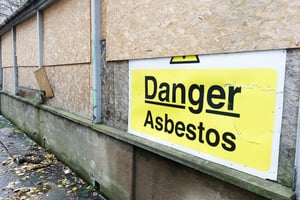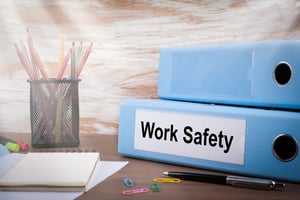 If you want to lower Restaurant Insurance costs, a comprehensive safety plan is essential. A well-designed and enforced safety program helps minimize the number of injuries. This results in fewer insurance claims, which lowers your insurance costs and provides numerous other benefits, such as improved employee morale and productivity.
If you want to lower Restaurant Insurance costs, a comprehensive safety plan is essential. A well-designed and enforced safety program helps minimize the number of injuries. This results in fewer insurance claims, which lowers your insurance costs and provides numerous other benefits, such as improved employee morale and productivity.
But where should you begin with a safety program?
According to the Bureau of Labor Statistics, slips, trips, and falls are the third most common type of work-related injury in the US and the second most common fatal work-related injury. While falling from a higher level resulted in more work-related fatalities, injuries caused by falls on the same level occur more often in restaurants and can cause injury. In fact, the BLS reports that half of all falls from the same level ended in more than ten days away from work.
The most common injuries in same-level falls include sprains, strains, dislocations, and tears to the lower extremities, which are the most expensive category of injuries, costing almost $13 million in Workers’ Compensation costs every year.
So, there’s your answer as to where to begin! Start your safety program by minimizing the risk of falls. Here’s information about one simple step – providing slip-resistant shoes - that can help significantly decrease slip, trip, and fall injuries in your restaurant.
The Study
According to the Centers for Disease Control and Prevention (CDC), “Laboratory studies of slip-resistant footwear to reduce slips, trips, and falls have shown promise in reducing slips, but limited field research made it difficult to demonstrate if slip-resistant footwear actually reduced injuries.”
So, researchers at the National Institute for Occupational Safety and Health (NIOSH) evaluated 17,000 food-service workers in 226 school districts across the US to determine the effectiveness of a program that provided highly-rated slip-resistant shoes at no cost to the workers. The researchers wanted to see if this type of program would reduce WC injury claims related to slipping on greasy or wet floors.
Workers in some of the school districts in the study wore 5-star rated slip-resistant shoes that were given to them at no cost, and workers in other districts wore their own slip-resistant shoes. The shoes provided were designed specifically to prevent slips on greasy or wet floors.
The Results
The districts where workers were provided slip-resistant shoes experienced a 67% reduction in claims for slip injuries. The baseline measure was 3.54 slipping injuries per 10,000 months worked, which was reduced to 1.18 slipping injuries per 10,000 months worked during the time when workers wore slip-resistant shoes that were provided at no cost.
The other districts where workers were not given slip-resistant shoes did not experience any decline in slip injuries.
The study also found that – prior to the study - workers over the age of 55 had a higher probability of a slip-related WC claim (4.2 injuries per 10,000 worker months) than workers under the age of 55 (2.3 injuries per 10,000 worker months). Therefore, as the number of workers over the age of 55 remain active in the US workforce, preventing slipping injuries becomes even more vital if businesses want to keep Workers’ Compensation costs down.
The CDC concluded, “The findings from this study provide evidence of the effectiveness of slip-resistant footwear and may assist employers, managers, and workers in their decision on whether to invest time and resources in a slip-resistant footwear program.”
Additional Tips to Lower Your Restaurant Insurance Costs
American Insuring Group specializes in Restaurant Insurance and is focused on providing the best insurance coverage at the best price. Discover more safety tips on our blog and give us a call today at (800) 947-1270 or (610) 775-3848 or connect with us online to discover how we can help you save even more on your Restaurant Insurance costs!



 We often focus on minimizing
We often focus on minimizing  More and more employers are moving away from the traditional guaranteed
More and more employers are moving away from the traditional guaranteed  Vocational rehabilitation (VR) is one of the benefits of
Vocational rehabilitation (VR) is one of the benefits of  Return-to-work (RTW) programs help employers by helping retain experienced workers, reduce turnover, and control
Return-to-work (RTW) programs help employers by helping retain experienced workers, reduce turnover, and control  As an employer, you may look at Workers’ Compensation (WC) Insurance as a necessary evil, but the truth is
As an employer, you may look at Workers’ Compensation (WC) Insurance as a necessary evil, but the truth is  Keeping workers safe helps businesses save money with lower
Keeping workers safe helps businesses save money with lower  Workers' compensation coverage is mandatory for most employers in Pennsylvania, and according to the
Workers' compensation coverage is mandatory for most employers in Pennsylvania, and according to the  A safe work environment translates to lower Workers Compensation and
A safe work environment translates to lower Workers Compensation and  Despite all of your best efforts to create a safe work environment, accidents do happen on worksites – whether it’s a restaurant or a construction site or even an office, and you should be prepared.
Despite all of your best efforts to create a safe work environment, accidents do happen on worksites – whether it’s a restaurant or a construction site or even an office, and you should be prepared.



